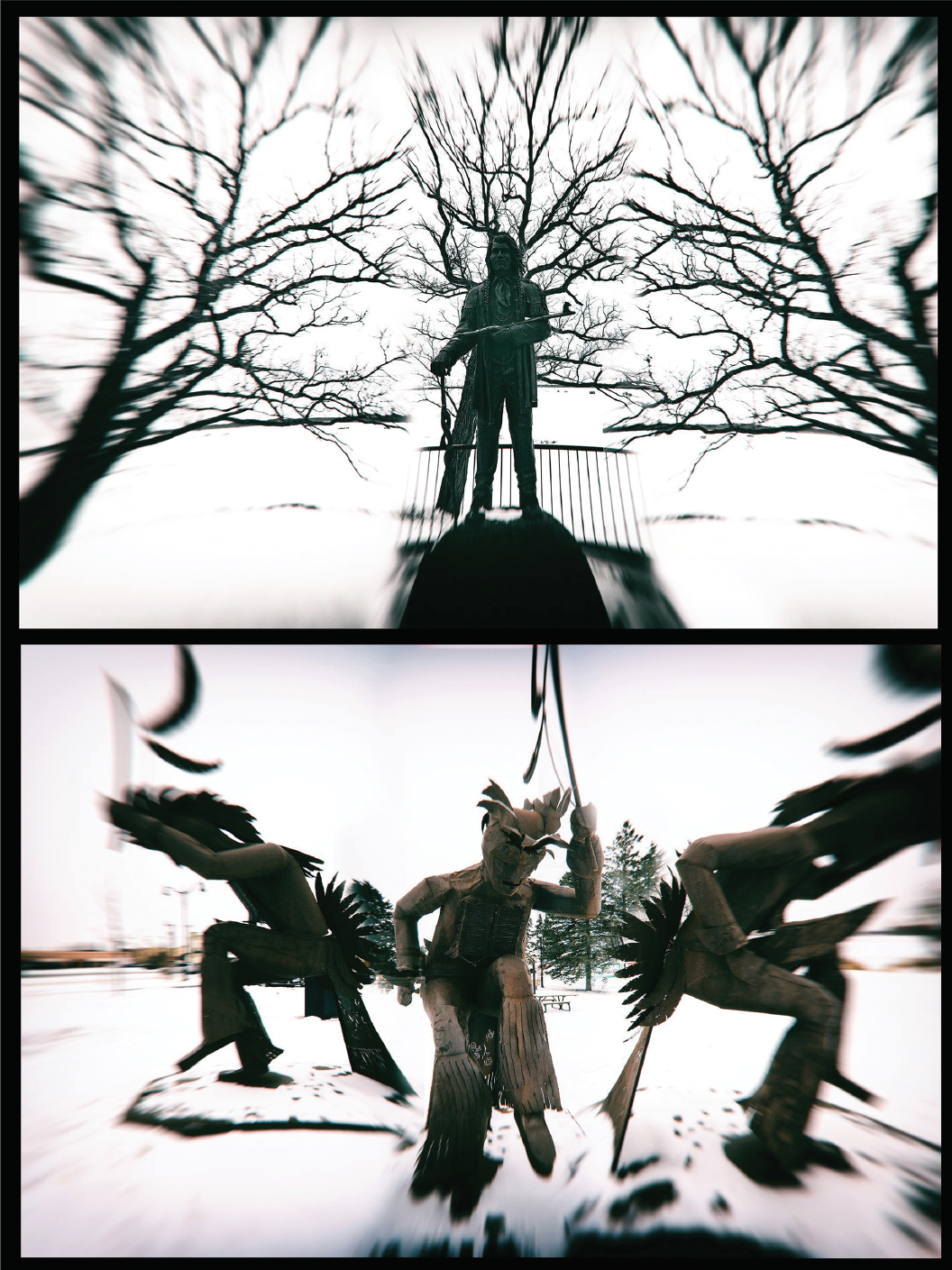Joseph J. Allen:
After Contact Sheet #7, 2019inkjet on canvas
courtesy of the artist
resources:
artist site
“From Pop Up Markets To Hockey Stadiums - Growing the Arts Ecosystem in White Earth,” First Peoples Fund
When Pop Goes Your Culture, Plains Art Museum exhibition
5 Plain Questions podcast feature:

“The Oceti Sakowin Oyate (People of the Seven Council Fires) call themselves the Dakota/Nakota/Lakota (the Allies). First contact with European colonizers in Mni Sota Makoce (land where the waters reflect the clouds) happened in the 1600s. It was almost 200 years later when first contact with a citizen of the United States happened. At the time, the Oceti Sakowin homeland ranged from what are now the states of Wisconsin, Minnesota, Iowa, Nebraska, the Dakotas, Wyoming, Montana, and on up into Canada. In less than 100 years after that first contact, the Dakota were exiled from Mni Sota Makoce and along with their Lakota relatives were forced to live on remote tracks of land that represent a fraction of their original homelands.”
These words by Joseph J. Allen ground this exhibition within the continuing multigenerational presence and stewardship of the Oceti Sakowin Oyate within their homelands, a wide and geographically diverse region of the continent that includes Fargo, the Plains Art Museum, and many of the communities from which the artists included in High Visibility call home. Allen’s After Contact Sheet series raises imperative questions on land sovereignty, but also the connected necessity of visual sovereignty.
In After Contact Sheet #7 and #8, Allen works with two different types of cameras to create images that counter one dimensional representations of Native people and cultural landscapes.
The photographs in Sheet #7 were taken using a Holga medium format film camera that features a plastic lens and thin plastic body, which allow for both light leaks and visual distortions. “The shutter and film advance are independent of each other and can lead to multiple exposures,” Allen writes. “In embracing all the camera’s imperfections, I created landscapes that reflect a sense of loss and dislocation.” While working with a digital camera in Sheet #8, Allen “stitched together” images afterwards with photo-editing software, creating work that looks back to analogue modes of photography but place that glance in a defamiliarized space where new understandings of place and culture can
be created.
This quality of caretaking extends from Allen’s creative vision into his community. As Director of the Gizhiigin Arts program in Mahnomen, Minnesota, Allen works to provide space and resources for artists and culture bearers to advance their skills, expand their networks, develop entrepreneurial strategies to reach new audiences. Through his leadership and a recent Indigenous Arts Ecology grant from First Peoples Fund, Allen is creating the conditions for many more artists and culture bearers to thrive.
Allen is a citizen of the Sicangu Lakota Oyate, and a direct descendant of the White Earth Ojibwe Nation. He lives in rural Sugarbush Township in the White Earth Nation. Allen has been creating and exhibiting his art for over 25 years and his work is in prominent collections across the region, including the Frederick R. Weisman Art Museum and the Minnesota Historical Society.
︎︎︎return to exhibition artists
︎︎︎further information at Plains Art Museum